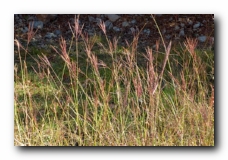
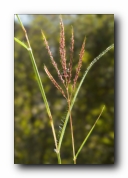
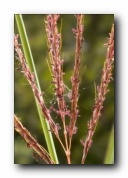
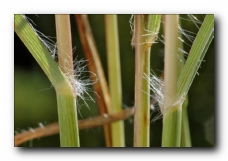
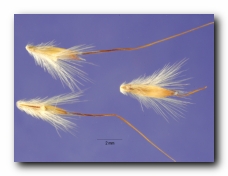
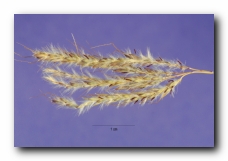
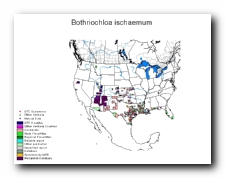
40" Rows: Broadcast:
0.6 pound pure live seed per acre
1.8 pounds pure live seed per acre
Sandy:
Loam:
Clay:
Moderate
High
Moderate
Habit: Tufted perennial. Culms: Erect or ascending, 60-130 cm. tall, often branching below, nodes from appressed hispid to glabrous. Blades: 5-16 cm. long, 3-6 mm. wide, commonly glaucous, glabrous or upper surface and margins somewhat rough. Sheaths: Shorter than the internodes. Ligule: Membranous, 1-2 mm. long. Inflorescence: Panicle long-exserted or those of the branches short-exserted, at first narrow and green, finally somewhat spreading, becoming silvery white, silky, dense, oblong, mostly 7-15 cm. long, made up of numerous racemes 2-4 cm. long, the common axis mostly at least twice as long, but readily breaking; rachis straight, the joints and pedicels flat, with thick bearded margins, the center subhyaline, bearing a sessile fertile and a pedicellate rudimentary spikelet in pairs, rachis internodes and pedicels long villous. Spikelets: About 4 mm. long, pedicellate spikelet reduced to a single scale 2-3 mm. long on a villous pedicel about 2 mm. long, the hairs 4-6 mm. long. Glumes: The first several nerved, 2-toothed, villous on the lower half at the base, ciliate on the margins at and near the apex, scabrous towards the apex, the second 3-nerved, ciliate at or near the apex. Lemmas: All about equal, that of the fertile spikelet with a delicate bent awn 10-15 mm. long, twisted below. Habitat: Plains, prairies and rocky slopes, especially in limestone areas. June-August. Synonyms: Bothriochloa saccharoides (Sw.) Rydb.
Special Notes: